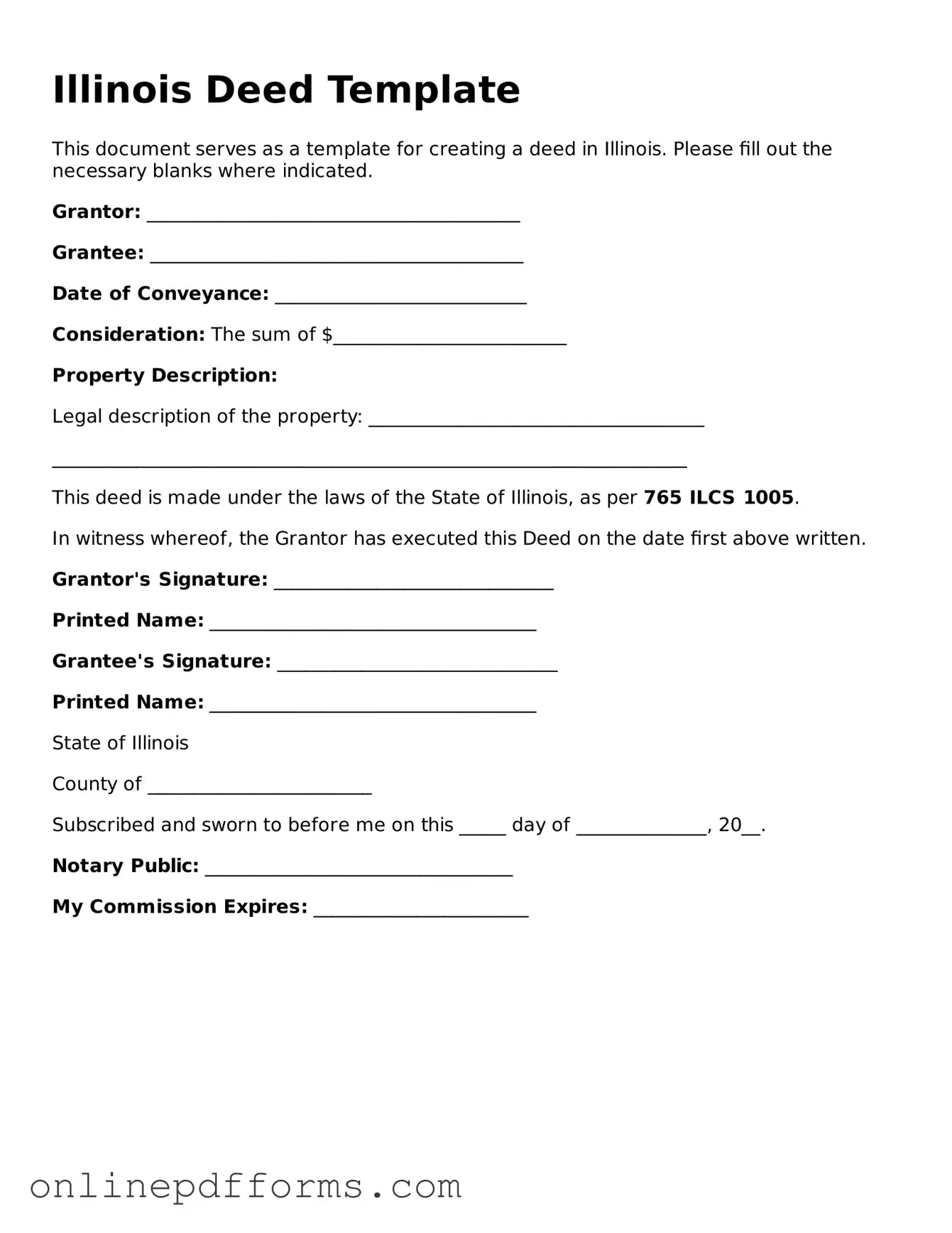The Illinois Deed form is similar to the Warranty Deed. A Warranty Deed guarantees that the seller holds clear title to the property and has the right to sell it. This type of deed protects the buyer by ensuring that there are no outstanding claims against the property. If any issues arise regarding ownership, the seller is responsible for resolving them, providing peace of mind to the buyer.
Another document akin to the Illinois Deed form is the Quitclaim Deed. Unlike a Warranty Deed, a Quitclaim Deed transfers whatever interest the seller has in the property without making any guarantees. This means that if the seller does not actually own the property, the buyer receives no legal recourse. This type of deed is often used among family members or in situations where the parties trust each other.
When engaging in a property transaction, it's crucial to ensure that all necessary paperwork is in order, particularly the relevant forms for the type of property being sold. For those looking to acquire a Recreational Vehicle, understanding the importance of documentation, such as the Auto Bill of Sale Forms, can safeguard both the buyer's ownership rights and the seller's interests during the transfer process.
The Special Purpose Deed also shares similarities with the Illinois Deed form. This deed is used for specific situations, such as transferring property from a trust or an estate. It may not provide the same level of protection as a Warranty Deed, but it serves its purpose in transferring ownership under unique circumstances, ensuring that the intent of the parties is honored.
A Bargain and Sale Deed is another document that resembles the Illinois Deed form. This type of deed implies that the seller has title to the property and the right to sell it, but it does not guarantee that the title is free of defects. Buyers may find this deed useful when purchasing property at a lower price, but they should be aware of the potential risks involved.
The Grant Deed is similar to the Illinois Deed form in that it transfers property ownership and includes some assurances about the title. The seller guarantees that they have not sold the property to anyone else and that the property is free from undisclosed encumbrances. This provides a bit more security for the buyer than a Quitclaim Deed, while still being less comprehensive than a Warranty Deed.
A Trustee's Deed is another document that can be compared to the Illinois Deed form. This type of deed is used when property is transferred by a trustee, often in the context of a trust or bankruptcy. It serves to convey the property from the trustee to the new owner, ensuring that the transfer complies with the terms of the trust or court order.
The Fiduciary Deed is also similar to the Illinois Deed form. This deed is used when a fiduciary, such as an executor or administrator, transfers property on behalf of another person. The fiduciary must act in the best interest of the estate or trust, and this type of deed helps ensure that the transfer is legally valid and recognized.
The Mineral Deed is another document that shares characteristics with the Illinois Deed form. This deed specifically transfers ownership of mineral rights beneath a property. While it may not convey the surface rights, it allows the buyer to extract minerals such as oil or gas, making it a specialized but important type of deed in real estate transactions.
Lastly, the Easement Deed is similar in that it involves the transfer of rights related to property. An Easement Deed grants someone the right to use a portion of another person's property for a specific purpose, such as access to a road or utility lines. While it does not transfer ownership, it is crucial in defining how property can be used and accessed.
